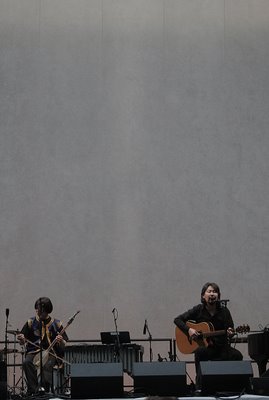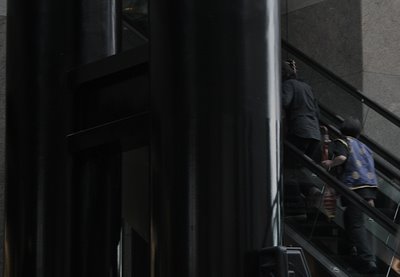I got my body out of storage in the last few weeks and propped it up on my old red Schwinn. Unfortunately the time it spent in storage left quite a bit of superfluous pork stored inside it. This 24-year-old, 200 pound (yes, I admit it – I blame it on being married somehow) body can still pedal like an Amish boy not yet 18, but the hills leave it gasping.
It’s worth it. To see Central Park asleep under the glaring lights of the half awake and still very proud (we are the center of the universe. watch us leave 50 floors [un]conscious [of the electricity we waste] all night) towers of Midtown when I wheeze into the Metropolitan Museum at East 80th Street for my night shift.
The morning ride shows me a different city. Sweaty bodies trundling under very green trees, the scent of jasmine (?) in the air. The margins of the Hudson River Park bike path are populated by weed-whackers and Cub Cadets which bring back the very Midwestern scent of grass freshly-cut. The mixing of the tide with upstate flood waters to my left fills the air with a brackish freshness which is incongruent with the traffic jam on the Henry Hudson to my right. No matter. The cathedral at 125th Street looms in front than behind. A duck that looks like a loon ducks it head for a fish. The sail of a yacht under the George Washington is reflected white in the river like Monet’s Sailboats at Argenteuil. I move faster than an upstream barge which is losing ground to a tugboat. And I am cruising – downhill to Dyckman Street in the classic “look ma no hands” pose of a tired but elated New Yorker home from work.











